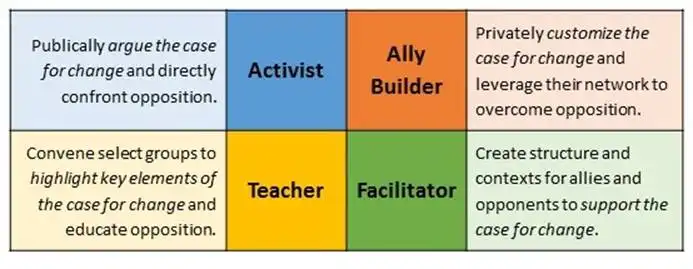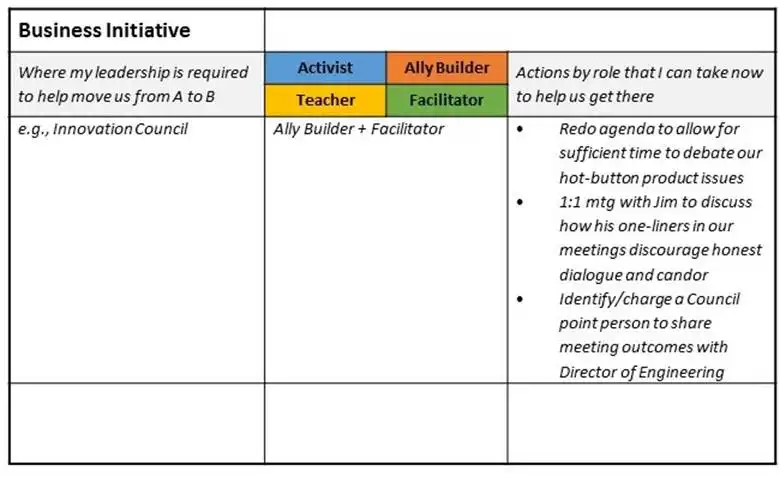Moving a business from A to B requires transformational leadership: launching a new product – leadership; moving from an individualist to collaborative culture – leadership; devising or executing a new strategy – leadership. Hopefully there’s nothing earth-shattering for you in that thought.
Regardless of the change that you want for yourself or your organization, its success hinges on your leadership. That much is obvious, but what kind of leadership your desired change needs may be less clear.
2 Essentials for Transformational Leadership
Effective A to B leadership requires two things: 1) knowing your distinct context, and 2) knowing and playing your distinct role in that context.
Knowing what makes your context distinct is often easier than knowing your role in it, because you’ve most likely lived your context. Here are a few questions you should be able to answer about the distinct realities of your transformation.
- What value does the transformation intend to accomplish?
- Whose involvement is essential to create that value?
- Has this type of change been attempted before? Why? Why not? How successful was it?
- Who will be impacted? How?
- How will you know it is successful?
Answers to these questions will help you understand your context and help you define your distinct role (and that of others) in ensuring a successful outcome. For instance, leading a BU from A to B on a precedent-setting journey requires much different leadership from a journey you’ve attempted unsuccessfully multiple times before.
Similarly, the scope and scale of the transformation, and thus those impacted, will determine the necessary involvement and buy-in required for success, which in turn has implications for your leadership. Make sure you have answers to the above questions before distinguishing your leadership for this transformation.
4 Concepts of Transformational Leadership
Once you understand the distinct context, you can begin to define the distinct requirements of transformation leaders. There are four roles leaders assume to effectively distinguish their leadership while leading transformation:
Activists work to “argue their case for change” publically in front of groups and confront nay-sayers. They articulate the vision for the future and passionately rally troops in large forums such as town halls or enterprise communications.
Ally Builders focus on one-on-one conversations and intentionally plan how to influence key players. They listen for what’s important to those involved and “customize their case for change” in private settings. They mobilize this growing network and leverage it toward those who oppose the change.
70% of Transformational Change Initiatives Fail
Get the blueprint for transformational leadership (and hear from those who’ve done it right)
Teachers convene leaders to create understanding behind the drivers and concepts for the change. They “highlight key elements of the case for change” such as the ROI and elements, like technologies, that support and ensure desired outcomes.
Facilitators create structure and context to support the case for change. They design meetings that help identify change implications and obstacles, and create communication plans that bring extended leadership into the process. They bring the right people in the right groups at the right time to create the greatest impact. They create a context for healthy conflict and safe debate.

You’ll Be Wearing Many Hats as a Transformation Leader
When distinguishing your role, you may find that your role is a combination of multiple roles. As the strategic significance and complexity of your role increases, so does the need to modulate your leadership. It’s not about being dishonest or insincere; different contexts require different leadership, and part of being effective is showing up with the leadership those contexts require.
Standing center stage at a company town hall is a very public and declarative context; whereas leadership of a cross-functional team convened to support and bring the transformation to life is a much more open and interactive forum, requiring the right type of structure to be effective.
At one moment you’re publicly declaring the case for change and being intolerant of opposition, and at the next, you’re creating a forum where conflict and dissent are acceptable. Both are required of the context. Both require a leader to adapt.
Leaders must learn to distinguish their leadership – their voice and actions – based on the requirements of the context. As you lead business initiatives that require moving from A to B, you can plan for your leadership to be optimally effective.
Learn More About the Concepts of Transformational Leadership
Prepare Yourself to Provide the Transformational Leadership Your Organization Needs
Pull out a piece of paper and make three columns. In the left-hand column identify each unique setting where your leadership through others will make a difference in the transformation you aspire to.
In the middle column, for each of those settings, identify the role (or combination of roles) that will help ensure the value you intend to create with those leaders. In the right-hand column, identify 2-3 role-specific actions you can take right now.

Be assured, for your business to remain competitive, it must move from A to B. In fact, multiple moves from A to B will be required on a regular basis. The more movement you have and the more quickly you need to get there, the more you must distinguish the contribution of an organization’s leaders.
Distinguishing your leadership to uniquely address the moves where you can have the greatest and most effective impact will help decrease complexity and speed results during the journey.
Struggling to Understand the Concepts of Transformational Leadership?
You’re not alone.
Understand what it means to be a transformational leader in the real world, and how you can lead your organization more effectively.

